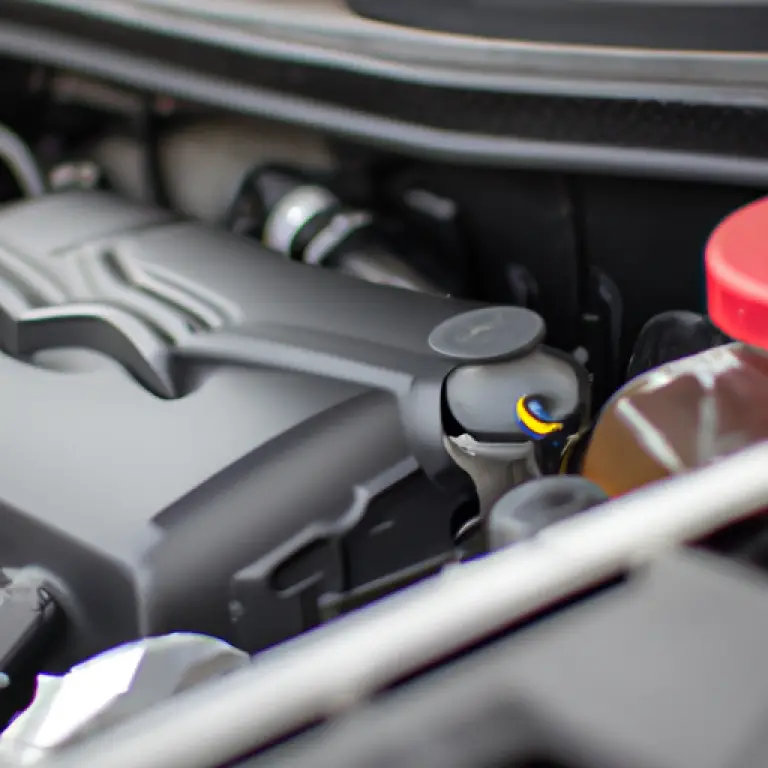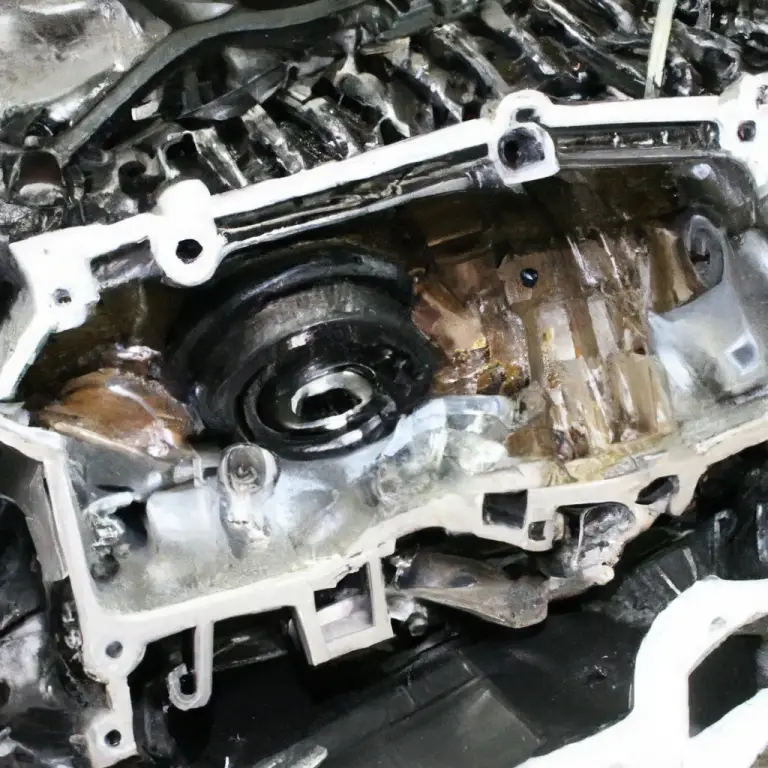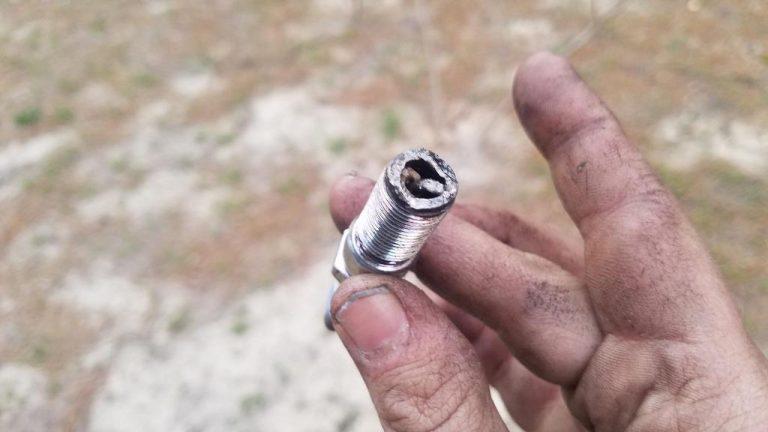Bank 1 Sensor 1 Ford F150 Ecoboost
In the world of automotive maintenance and repair, in-depth knowledge and correct information are your most potent tools. Today’s article focuses on insights regarding the Bank 1 Sensor 1 for Ford F150 Ecoboost – a fundamental element of Ford’s innovative Ecoboost engine technology. Tailor-made to assist Ford owners, automobile enthusiasts, and professionals in the repair sector, it offers a thorough exploration of the sensor’s functionalities and troubleshooting techniques. So if you are a proud owner of a Ford, a do-it-yourself enthusiast, or simply someone interested in the mechanics of Ford maintenance, we invite you to join us as we navigate the intricacies of this critical automotive component.

Understanding Bank 1 Sensor 1 in Ford F150 Ecoboost
Definition of Bank 1 Sensor 1
Bank 1 Sensor 1 refers to a critical component situated in the engine system of a vehicle. It’s a sensor responsible for monitoring the level of oxygen content present in the vehicle’s exhaust gases. Positioned on the engine’s ‘Bank 1’, which contains the first cylinder, this sensor is often the ‘first’ sensor when it comes to sequence and plays a crucial role in engine management.
Operational Role of the Sensor in a Vehicle
The primary function of Bank 1 Sensor 1 is to maximize the engine performance by managing the air/fuel mixture in the combustion chamber. By maintaining an optimal air/fuel ratio of 14.7:1, the sensor ensures that the engine operates with maximum fuel efficiency while minimizing harmful exhaust emissions. Any deviations in this ratio are communicated to the vehicle’s Electronic Control Unit (ECU), which then make the necessary adjustments to preserve the ratio.
Specific Functionality in Ford F150 Ecoboost
In the Ford F150 Ecoboost, the Bank 1 Sensor 1 works in conjunction with the fuel injection system to optimize the engine’s performance. It monitors the oxygen levels within the exhaust gases and sends a signal to the ECU to adjust the fuel injection rate. By doing so, it aids in preserving fuel economy and reducing exhaust emissions.
Identifying the Location of Bank 1 Sensor 1
General Location in Vehicles
In most vehicles, Bank 1 Sensor 1 is located on the engine’s exhaust system. Specifically, the sensor is positioned on the side of the exhaust system that houses the vehicle’s first cylinder. It is typically close to the exhaust manifold and often bolted directly onto it.
Specific Placement in Ford F150 Ecoboost
In the Ford F150 Ecoboost, Bank 1 Sensor 1 is found on the passenger side of the vehicle’s engine bay. This particular placement allows the sensor to effectively monitor the oxygen content in the exhaust gases directly from the combustion chamber.
Visual Identification and Key Features
Visually, Bank 1 Sensor 1 is a compact item with an electrical connector at one end and a probe at the other. It’s typically made of ceramic encased in metal for durability. Its wire harness leads to the vehicle’s ECU, facilitating communication between the sensor and the ECU.
Common Problems with Bank 1 Sensor 1
Typical Signs of a Bad Sensor in Vehicles
Some common signs of a malfunctioning Bank 1 Sensor 1 include poor fuel economy, reduced vehicle performance, and the illumination of the check-engine light. Other symptoms may include erratic engine behavior such as hesitation when accelerating, rough idling, or even engine misfires.
Unique Symptoms Seen in Ford F150 Ecoboost
In the Ford F150 Ecoboost, a faulty Bank 1 Sensor 1 may result in turbo lag, a phenomenon where there is a delay in the turbo’s power delivery. This is due to the domino effect of the sensor sending inaccurate information to the ECU, leading to an imbalanced air-fuel mixture which hinders the turbo’s efficiency.
Understanding Error Codes Related to Bank 1 Sensor 1 in Ford F150 Ecoboost
A malfunctioning Bank 1 Sensor 1 in the Ford F150 Ecoboost often translates to specific error codes that can be read via an onboard diagnostic (OBD) tool. The precise error codes may vary, but typically P0130, P0171, or P2195 codes signal an issue with this sensor.

Impact of Sensor Failure on the Vehicle Performance
Potential Drop in MPG
A malfunctioning Bank 1 Sensor 1 can negatively impact the vehicle’s fuel economy. The sensor maintains an optimal air-fuel mixture ratio in the engine, aiding in the efficiency of fuel combustion. If it fails, the vehicle might experience a decline in miles per gallon, leading to more frequent and costly refueling.
Issues with Emissions
Bank 1 Sensor 1 is also crucial for controlling vehicle emissions. A faulty sensor may not accurately gauge the oxygen levels in the exhaust gases, leading to an imbalanced air-fuel mixture that produces more pollutants. This may result in the vehicle failing emissions tests.
Impact on Vehicle Power and Acceleration
A malfunctioning sensor can impair the vehicle’s power output and acceleration capability. It can cause the ECU to misinterpret the oxygen levels, causing engine misfires, hesitation during acceleration, or a reduced power output.
Inspection and Diagnosis of Bank 1 Sensor 1
Step by Step Diagnostic Process
To diagnose a potential issue with Bank 1 Sensor 1, start by scanning the vehicle using an OBD-II scanner to check for any related error codes. Following this, physically inspect the sensor itself for visible damage or contamination. Finally, evaluate the sensor’s voltage readings using a multimeter. These steps would definitively confirm any concerns regarding the sensor.
Common Diagnostic Tools and Their Usage
To diagnose issues with Bank 1 Sensor 1, use common diagnostic tools like an OBD scanner and a multimeter. An OBD scanner retrieves error codes from the vehicle’s ECU, which can indicate specific faults. A multimeter, meanwhile, measures the voltage output from the sensor, providing insight into its operational status.
Special Considerations for Ford F150 Ecoboost
When diagnosing issues with the Bank 1 Sensor 1 on the Ford F150 Ecoboost, consider the unique features of this vehicle. For instance, the twin-turbo setup and the direct fuel injection system may affect the sensor’s operation. Hence, ensure that these systems are functioning correctly as part of the diagnostic process.
Considerations in Sensor Replacement
Choosing the Right Replacement Sensor
When the Bank 1 Sensor 1 needs replacement, it is crucial to choose the correct part that is compatible with the Ford F150 Ecoboost. Verify the exact part number, often found on the original sensor, or consult your vehicle’s user manual or a trusted automotive parts supplier.
Time and Skill Level Required for DIY Replacement
Replacing the Bank 1 Sensor 1 on the Ford F150 Ecoboost demands a moderate level of mechanical skill. The process, which usually takes between one to two hours, involves safely raising the vehicle, meticulous removal of the old sensor, and installing the new one.
Possible Cost of Professional Replacement
The cost of professional replacement of the sensor varies widely depending on geographical location, labor rates, and the exact parts used. Generally, you can expect this repair to fall in the $200 to $500 range.
Step-by-Step Guide to Replace Bank 1 Sensor 1
Material and Tool Gathering
To replace the sensor, gather the new sensor, an oxygen sensor socket or wrench, a jack and jack stands, and basic hand tools.
Removal of Old Sensor
The sensor’s removal involves raising the vehicle safely, disconnecting the sensor’s electrical connector, and using the oxygen sensor socket or wrench to unscrew it from its placement.
Installation of the New Sensor
To install the new sensor, replace the sensor in the opposite way it was removed. Screw it in place using the oxygen sensor socket, reconnect the electrical connector, and safely lower the vehicle.
Preventive Measures to Enhance Sensor Life
Guidelines for Optimal Vehicle Maintenance
To extend the lifespan of Bank 1 Sensor 1, adhere closely to your vehicle’s recommended maintenance schedule. Regular oil changes and use of high-quality fuel can help keep the sensor in good condition.
Driving Habits Effect on Sensor Lifespan
Driving habits can also impact the sensor’s lifespan. Aggressive driving that leads to higher RPMs can cause the sensor to work harder, potentially shortening its lifespan.
Periodic Inspection Suggestions
Periodically inspecting Bank 1 Sensor 1 can help ensure its long-term functionality. Regular comprehensive diagnostic checks can catch any emerging issues early before they cause significant problems.
How to Reset or Clear the Sensor Error Code
How to Use an OBD-II Scanner for Error Code Clearing
An OBD-II scanner not only reads error codes but can also reset them. After repairing or replacing the sensor, plug the OBD-II scanner into your vehicle’s diagnostic port, usually located in the driver’s side footwell, and follow the scanner’s prompts to erase the codes.
Step-by-Step Process to Reset the Sensor
To reset the sensor, first, ensure that the sensor issue has been resolved. Next, connect an OBD-II scanner to the vehicle and follow the tool’s instructions to clear the error codes.
Signs That the Code Reset Was Successful
When the code reset is successful, the check-engine light should no longer be illuminated on the vehicle’s dashboard. Additionally, the error codes related to the sensor will no longer display when scanning the vehicle with the OBD-II scanner.
Understanding the Role of Bank 1 Sensor 1 in Emission Control
Sensor’s Role in Regulating Fuel Mixture
The responsibility of Bank 1 Sensor 1 extends beyond merely optimizing the engine’s performance. It is instrumental in regulating the air-fuel mixture, thereby controlling the vehicle’s exhaust emissions. Improper mixture can lead to harmful pollutants, making this sensor essential in emission control.
Impact on Emission Levels
Inaccurate information from a faulty Bank 1 Sensor 1 can result in an imbalanced air-fuel mix. This discrepancy leads to incomplete combustion of fuel, resulting in higher emissions. Thus, a properly functioning sensor is critical to maintaining low emission levels.
Relation to Vehicle’s Compliance with Emission Standards
Bank 1 Sensor 1 plays a key role in ensuring a vehicle’s compliance with emission standards. As environmental regulations become increasingly stringent, it is critical that all components, including the Bank 1 Sensor 1, function optimally to meet these standards. Failure of this sensor may result in the vehicle failing an emissions test.







